25.11.2025

We’ve been working towards this for decades, and now the time has finally come. Last week, ESO’s Paranal Observatory was host to a show unlike any other as four lasers, one from each of the 8-metre telescopes of the Very Large Telescope (VLT), were projected into the skies. All in the name of science, of course.
In this Chasing Starlight episode, we’ll explore GRAVITY+, a massive upgrade to ESO's VLT Interferometer and how new lasers are opening up the southern sky to this facility.
For more details, check: https://www.eso.org/public/news/eso2519/.
Credit:
ESO
Directed by: L. Calçada, M. Kornmesser
Hosted by: S. Randall
Written by: M. Nora Duffek, Suzanna Randall
Editing: M. Kornmesser, L. Calçada
Videography: A. Tsaousis
Animations & footage: ESO, M. Kornmesser, L. Calçada, A. Tsaousis, ESA/Hubble, C. Malin, G. Lombardi, P. Horálek, NASA, Microgate, B. Tafreshi, MPE/GRAVITY+ Collaboration, Gravity Consortium, N. Risinger, Jordy Davelaar et al., Radboud University, BlackHoleCam, A. Berdeu, J. Beltran
Music: Videvo/Envato
Web and technical support: E. Arango, R. Shida
Scientific consultant: A. Mérand
Promotion: O. Sandu
Filming Locations: ESO Supernova (supernova.eso.org)
GRAVITY+ was carried out by a consortium led by the Max Planck Institute for Extraterrestrial Physics. PI: Frank Eisenhauer
Produced by ESO, the European Southern Observatory (eso.org)
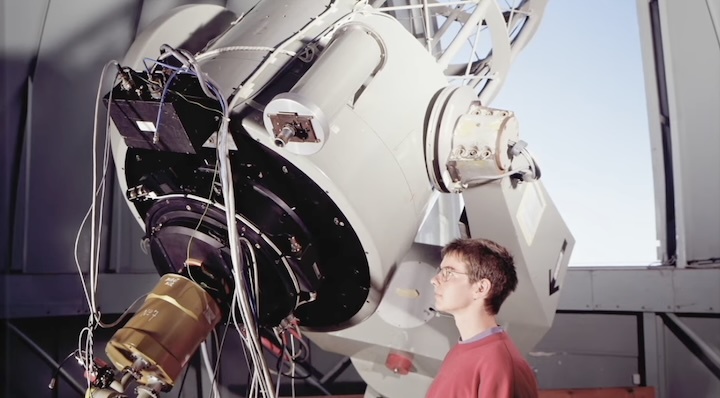
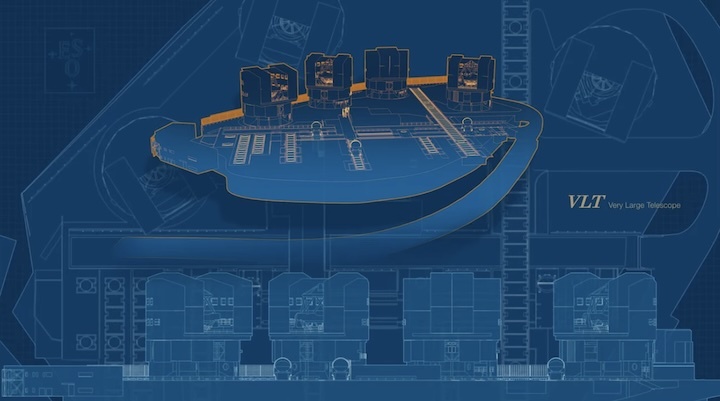
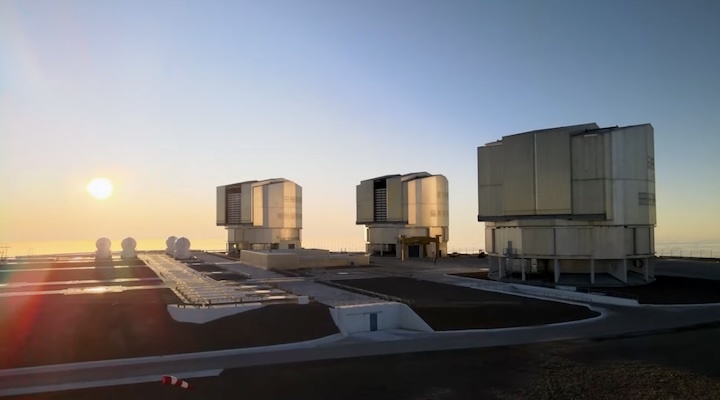
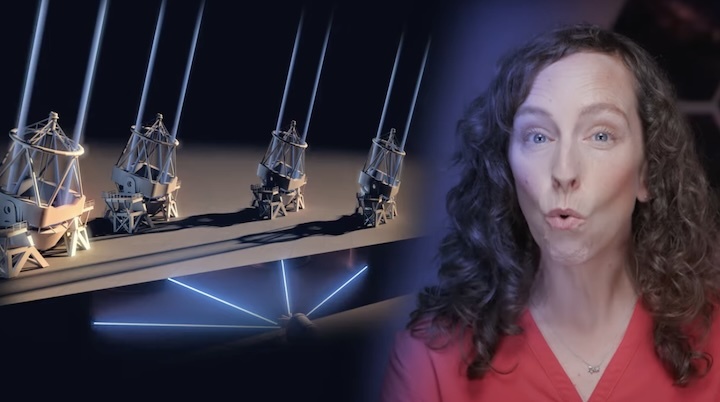
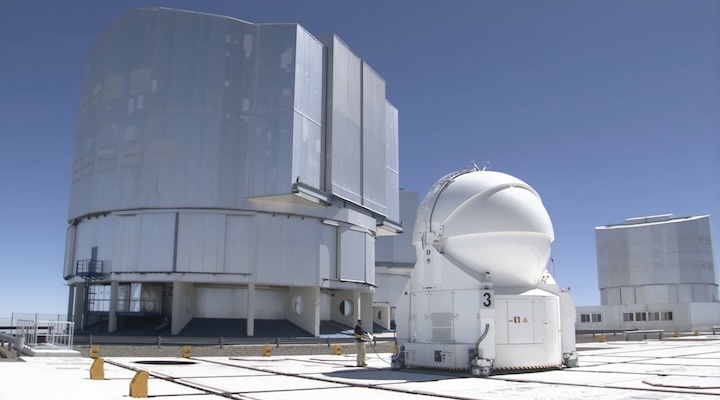

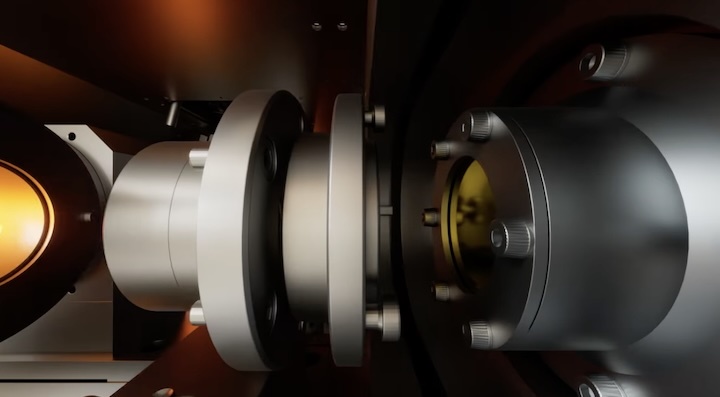
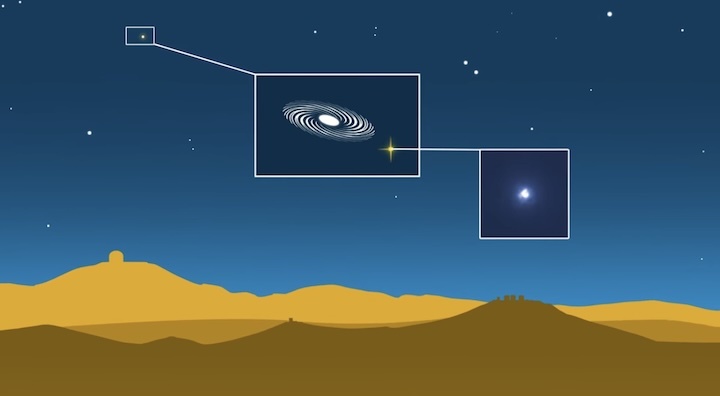


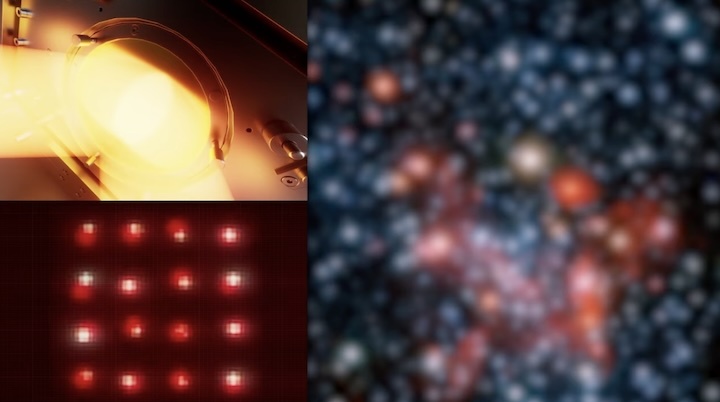
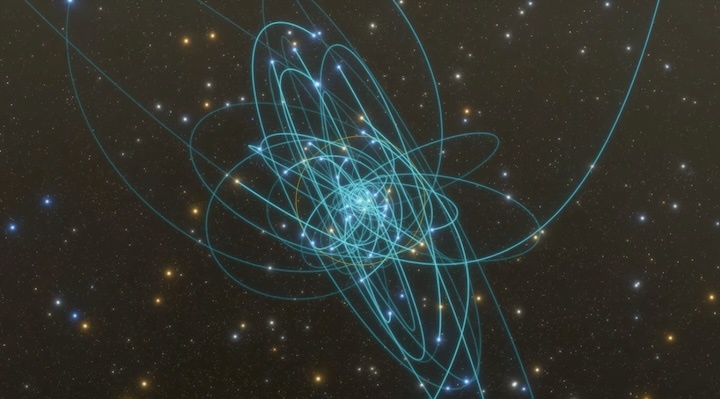
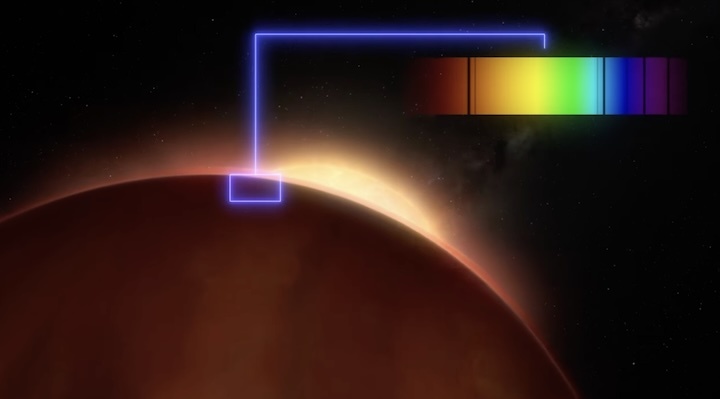
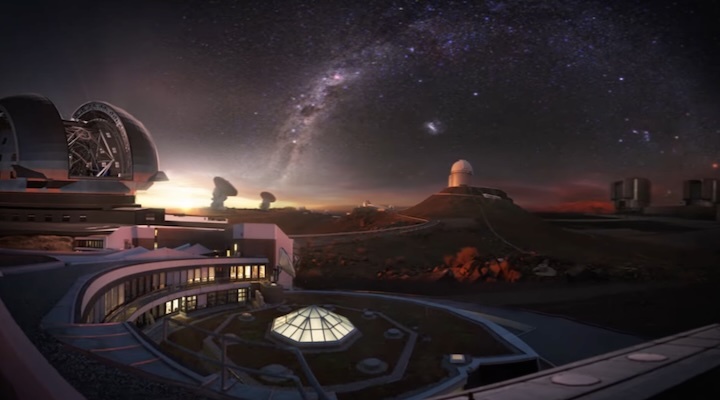
Quelle: ESO
+++
A telescope fist bump in the sky

Only by working together as a team can all of ESO’s 8 m telescopes become the Very Large Telescope Interferometer (VLTI) — and today’s Picture of the Week captures this teamwork perfectly. The photograph, taken by Juan Beltrán, an instrumentation technician at ESO’s Paranal Observatory in Chile, marks the beginning of a new interferometry era.
Most of the time these so-called Unit Telecopes (UTs) work as standalone telescopes, each one observing a different object. But they can also point at the same target, combining their light with interferometry to obtain the same level of detail of a huge 130 m virtual telescope. This requires measuring and correcting the effects of Earth’s atmosphere, which was previously done through bright reference stars, hard to find next to the object one wants to study.
As part of the GRAVITY+ upgrade, new lasers were installed in the previously unequipped UTs. These lasers create artificial stars high up in the atmosphere, near the observation target on sky, that can be used to correct atmospheric turbulence. Now that the lasers are ready, the observations are not limited to natural bright reference stars anymore, opening the whole southern sky to the VLTI. And the GRAVITY+ trial run in early November blessed us with the mesmerising view of all four lasers pointing to one target on the sky, as if they were fist bumping as a team.
Quelle: ESO
